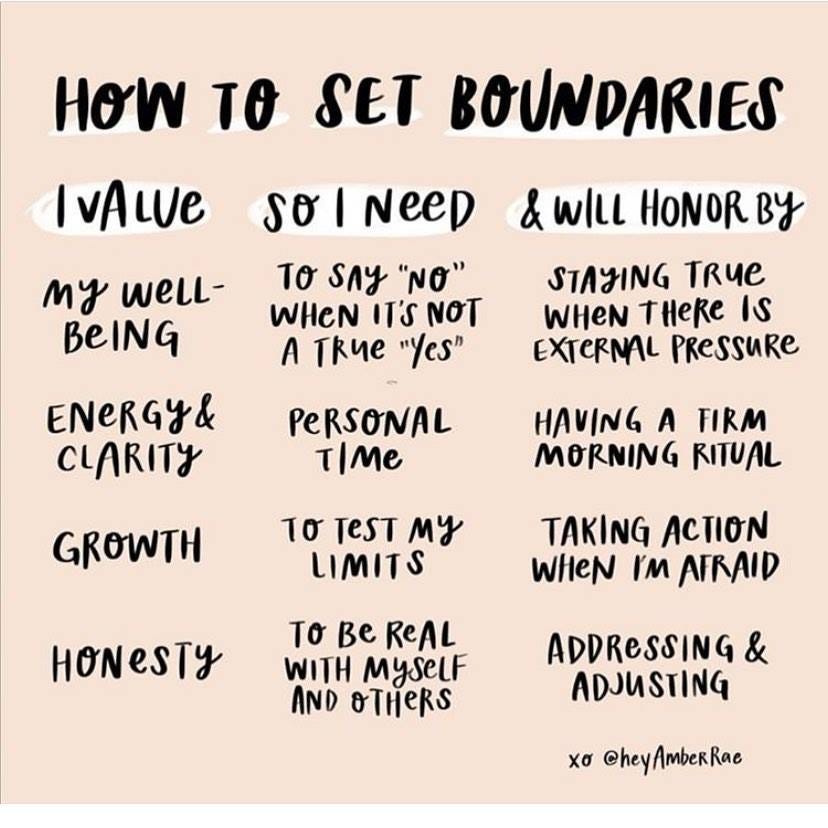When I first started going to therapy, I didn’t know what to expect. I knew I wanted to try opening up about my mental health, but I had no clue about the lessons I’d learn from talking to a therapist. Today, on "Smile with Sander," I want to share one of the very first breakthroughs I had when I first started therapy: Learning how to set healthy boundaries with myself and my loved ones.
Growing up, one of my favorite cliché terms was "treat others how you want to be treated." I thought that was the name of the game and that everyone would treat me the way I wanted to be treated as long as I treated them well too. Well, you learn in life that that’s not always going to be the case—no matter how well you treat some people, not everyone will reciprocate. They might love differently, they might not be as kind, or they might not even realize that the things they do or say have a negative effect on you.
What are boundaries?
Boundaries help promote physical and mental wellness in your relationship with yourself and others. They set the framework for ensuring that you treat yourself and others the way you want to be treated, overall leading to more smiles and positivity in your life.
Setting boundaries with others
When I started therapy, it was after I found myself venting to my family and friends, constantly seeking validation. I realized that I had set unhealthy boundaries in how I was communicating with my loved ones, and not establishing any expectations within my relationships. Through therapy, I learned how to set boundaries with others. Here are some examples:
Example 1: Your family member might always ask if you want to get ice cream. Since you made a personal decision to not eat ice cream anymore, every time they ask, it triggers you and makes you not want to hang out with them as much. Unless you set the boundary with your family member not to ask you for ice cream, they're going to continue doing it. It will continue causing harm unless you let that member of your family know you are no longer eating ice cream and would appreciate it if they no longer ask you to get ice cream. By setting that healthy boundary, you will be able to be around them and reduce the likelihood of that unhealthy trigger.
Example 2: Let’s consider another example. Your significant other always brings up topics about their past that make you uncomfortable. You trust and love them, but every time they talk about it, it still has a negative effect on you. In this case, you can let them know how this makes you feel and kindly ask that they avoid talking about it when possible. This healthy boundary between you and your loved one can improve your relationship.
Those are just a few examples of boundaries, but there are many other types of boundaries.
When creating them, they allow you to be less codependent, make sure others know how you feel about certain things, situations, or topics of conversation, and set a healthier space between you and the people around you. It’s important that you make these boundaries clear, fair, and that you respect if they have a boundary for themselves once you share how you feel. Boundaries with others can evolve and grow, and don’t get perfected overnight. It’s all about taking that first step toward creating healthier relationships with those around you.
Setting boundaries with yourself
When I was working on boundaries with others, I came to my own realization: That boundaries aren’t just set between you and other people; You also can set boundaries with yourself.
Example 1: You know that your partner's ex is going to be at an event that you are attending. You feel confident in your relationship, but have found that in the past, you always get jealous and make negative comments whenever the ex is around. So, you set a boundary with yourself to keep any negative comments to yourself because you have found that they never help the situation. This boundary allows you to internalize your emotions, improve your relationship with your loved one, and demonstrate that you trust them.
Example 2: You might also set a boundary with work. For example, this week and into the next, I am going on a ski trip and have set the boundary with myself to turn off work and focus on being present. I will set goals to help me reach this boundary and overcome some burnout I’ve been feeling.
Setting boundaries with yourself can be very difficult, but it can really help you in your relationship with yourself and others. It could help you avoid burnout, improve healthier communications, and be proud of who you are. I know for me; setting boundaries with myself is something I do a lot, and it really has helped me stay grounded.
Challenge:
This Monday, I challenge you to set two boundaries in your life. Set one with yourself and one with someone you love. I’m sure as you were reading this, you thought of situations where setting a boundary could really help improve your relationship with yourself or others. You can do it! Happy Monday - keep smiling and be proud to be you.
I now am making myself available to 2 more life coaching clients. If you’re interested in working on finding balance in your life, leave a comment below & I’ll be sure to reach out 👇🏽






